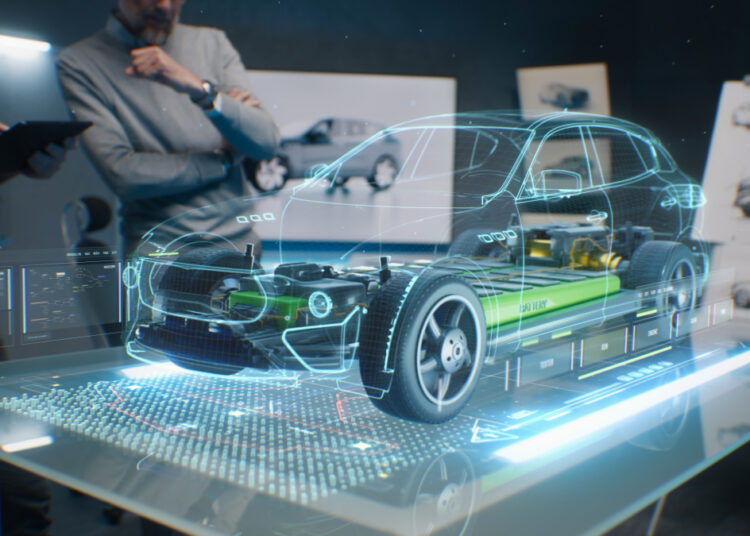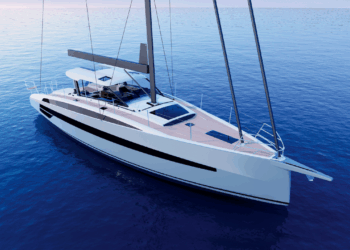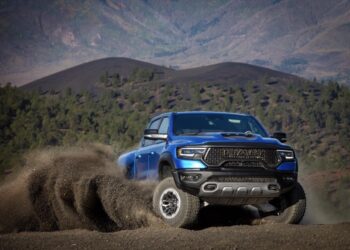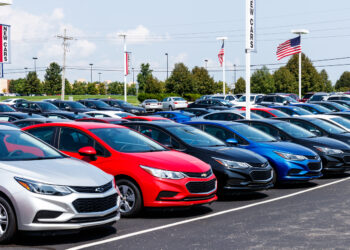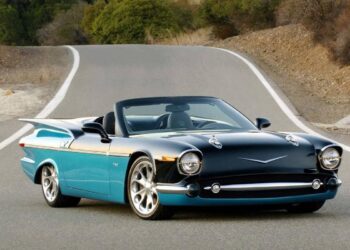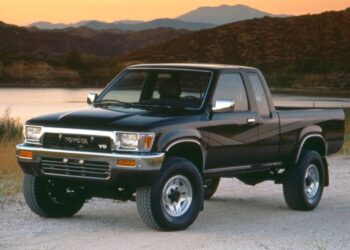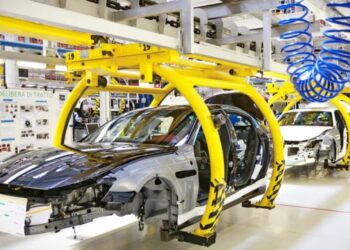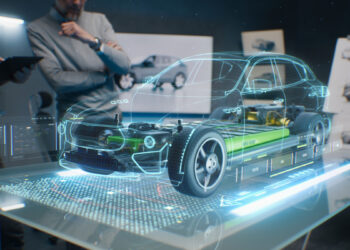The automotive industry is in a perpetual state of flux, driven by technological leaps, evolving consumer tastes, and an urgent global push towards sustainability. At the forefront of this transformation is automotive design, a discipline that blends artistry with engineering, shaping not just how vehicles look, but how they perform, interact, and integrate into our lives. What was once primarily about aesthetics is now a holistic process, encompassing user experience, aerodynamics, material innovation, and the narrative of brand identity. The current automotive design trends are a fascinating reflection of these complex forces, heralding a future where vehicles are cleaner, smarter, more intuitive, and increasingly personalized, redefining the very essence of mobility.
What’s Driving Automotive Design?
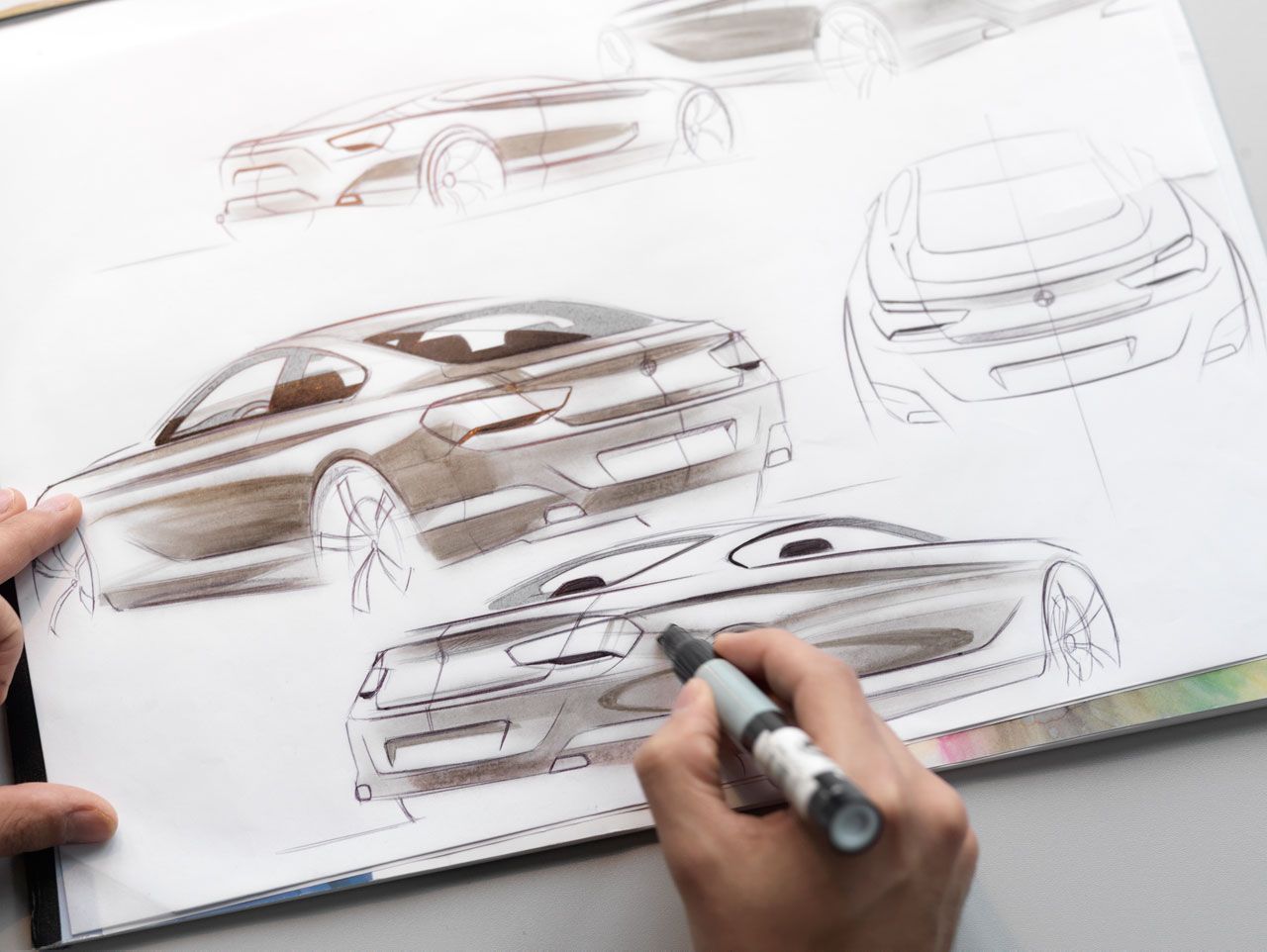
Automotive design is not created in a vacuum. It is a direct response to, and often a leading indicator of, broader societal, technological, and environmental shifts. Understanding these driving forces is crucial to appreciating the current and future trends in car aesthetics and functionality.
A. The Electrification Revolution’s Influence
The profound shift from internal combustion engines (ICE) to electric powertrains is arguably the most impactful force reshaping automotive design.
- New Proportions and Packaging: Electric powertrains, particularly battery electric vehicles (BEVs), allow for radical rethinking of vehicle proportions. The absence of a large engine block, transmission tunnel, and exhaust system frees up significant space. This often leads to:
- “Cab-Forward” Designs: The cabin can be pushed further forward, creating a longer wheelbase and more interior space relative to the vehicle’s overall length.
- Shorter Hoods: The traditional long hood, necessary for ICE, can be dramatically shortened or eliminated, leading to more compact front ends.
- Flat Floors: Batteries integrated into the floor create a flat, expansive interior space, enhancing comfort and flexibility.
- Elimination of Grilles: As electric motors require less airflow for cooling than ICE, traditional large grilles often become redundant, leading to sleek, sealed front fascias or more artistic interpretations of a “grille.”
- Aerodynamic Optimization: Efficiency is paramount for EVs to maximize range. This necessitates designs with extremely low drag coefficients, influencing:
- Sleek, Smooth Surfaces: Minimizing protrusions, sharp edges, and gaps to ensure smooth airflow.
- Flush Door Handles and Cameras instead of Mirrors: Reducing drag-inducing elements.
- Active Aerodynamics: Integrating movable spoilers, grilles, and air dams that adjust to optimize airflow at different speeds.
- Wheel Design: Wheels are often designed to be more aerodynamic, sometimes featuring covers or minimal spoke designs.
- Unique Identity: Designers are grappling with how to make EVs visually distinct from ICE cars, signaling their advanced nature and environmental credentials. This involves unique lighting signatures, subtle blue accents, or distinctive wheel designs.
- Bi-directional Charging Integration: Design elements might subtly incorporate indicators or interfaces for vehicle-to-grid (V2G) or vehicle-to-load (V2L) capabilities.
Electrification is not just changing what’s under the hood; it’s redefining the very form language of the automobile.
B. The Rise of Autonomous Driving Capabilities
As vehicles become more intelligent and capable of self-driving, design must adapt to a potentially less engaged human occupant.
- Interior Transformation: As the driver becomes more of a passenger, the interior can be reimagined as a lounge-like space:
- Reconfigurable Seating: Seats that swivel, recline, or face each other.
- Retractable Controls: Steering wheels and pedals that fold away when autonomous mode is engaged.
- Larger Screens and Immersive Displays: Expanding infotainment and information displays, potentially across the entire dashboard or even projection onto windows.
- Focus on Comfort and Productivity: Design elements supporting relaxation, work, or entertainment during transit.
- Exterior Communication: Autonomous vehicles will need to visually communicate their status (e.g., in autonomous mode, detecting a pedestrian) to other road users through light strips, digital displays, or distinct external lighting signatures.
- Sensor Integration: Seamlessly integrating an array of sensors (Lidar, radar, cameras) into the vehicle’s design without compromising aesthetics or functionality. Designers are tasked with making these sensors invisible or elegant design features.
- Redundant Systems: Designing for multiple layers of safety and backup systems, subtly affecting internal packaging.
Autonomous driving shifts the design focus from the driver’s seat outwards to the entire interior and external communication.
C. Digitalization and User Experience (UX)
Modern consumers expect seamless digital integration, pushing automotive design towards a software-first approach.
- Screen Dominance: The proliferation of large, high-resolution touchscreens in vehicle interiors, often replacing physical buttons and controls. Design now focuses on intuitive user interfaces (UI) and user experience (UX) to manage complex functionalities.
- Digital Cockpits: Fully customizable digital instrument clusters that allow drivers to tailor information displays, integrating navigation, media, and driver-assistance visuals.
- Voice and Gesture Control: Reducing the need for physical interaction, design integrates microphones and cameras for natural language processing and gesture recognition.
- Personalization: Interiors are designed to adapt to individual driver profiles, automatically adjusting seat positions, climate settings, ambient lighting, and infotainment preferences upon entry.
- Over-the-Air (OTA) Updates: The ability to update vehicle software remotely means the design of the digital interface can evolve and improve over time, adding new features or refining existing ones.
- Seamless Device Integration: Design accommodates easy charging (wireless pads, multiple USB-C ports) and physical integration of personal devices.
The car’s interior is becoming a personalized digital ecosystem, with design playing a crucial role in making complex tech user-friendly.
D. Sustainable Materials and Circular Economy Principles
Environmental consciousness is no longer an afterthought; it’s shaping material choices and manufacturing processes.
- Recycled and Sustainable Materials: Increasing use of recycled plastics, reclaimed wood, cork, vegan leather, and textiles made from recycled bottles in interior trims and exterior components.
- Natural Fibers: Exploration of materials like flax, hemp, or even pineapple leaf fibers for interior panels, reducing reliance on petroleum-based plastics.
- Lightweighting for Efficiency: Continued focus on advanced lightweight materials (carbon fiber, aluminum, high-strength steel) to reduce vehicle weight, improving fuel efficiency for ICE cars and range for EVs.
- Design for Disassembly: Vehicles are engineered from the outset to be easily disassembled at the end of their life, facilitating the recycling and reuse of components and materials.
- Reduced Waste in Manufacturing: Design considerations that minimize material waste during production processes.
- Material Transparency: Consumers increasingly want to know the origin and environmental impact of the materials used in their vehicles.
Sustainable material choices and a circular economy mindset are becoming fundamental to automotive design.
E. Evolving Body Styles and Market Segments
Consumer preferences are continually shifting, leading to new and evolving vehicle categories.
- SUV Dominance and Diversification: The SUV body style continues its global reign, but design is fragmenting into various sub-segments:
- Coupe SUVs: Blending SUV presence with sleeker, sloped rooflines (e.g., BMW X4, Mercedes-Benz GLC Coupe).
- Electric SUVs: Often featuring unique proportions and interior space advantages due to EV platforms (e.g., Hyundai Ioniq 5, Kia EV6).
- Performance SUVs: High-powered SUVs that offer sports car levels of acceleration and handling (e.g., Lamborghini Urus, Aston Martin DBX 707).
- The Reimagining of Sedans: While less dominant, sedans are evolving with more aggressive, coupe-like profiles and often becoming electric-only models (e.g., Mercedes-EQS, Hyundai Ioniq 6), emphasizing aerodynamics and technology.
- Pickup Truck Evolution: Pickups are becoming more sophisticated, offering luxury and advanced tech, appealing beyond traditional workhorse roles, with electric variants introducing new design possibilities (e.g., Cybertruck, F-150 Lightning).
- Micro-mobility Integration: Design considerations for how cars interact with and potentially transport micro-mobility solutions like e-scooters or e-bikes.
Designers must constantly adapt to and anticipate these shifts in consumer demand for specific vehicle types.
Key Automotive Design Trends in Practice
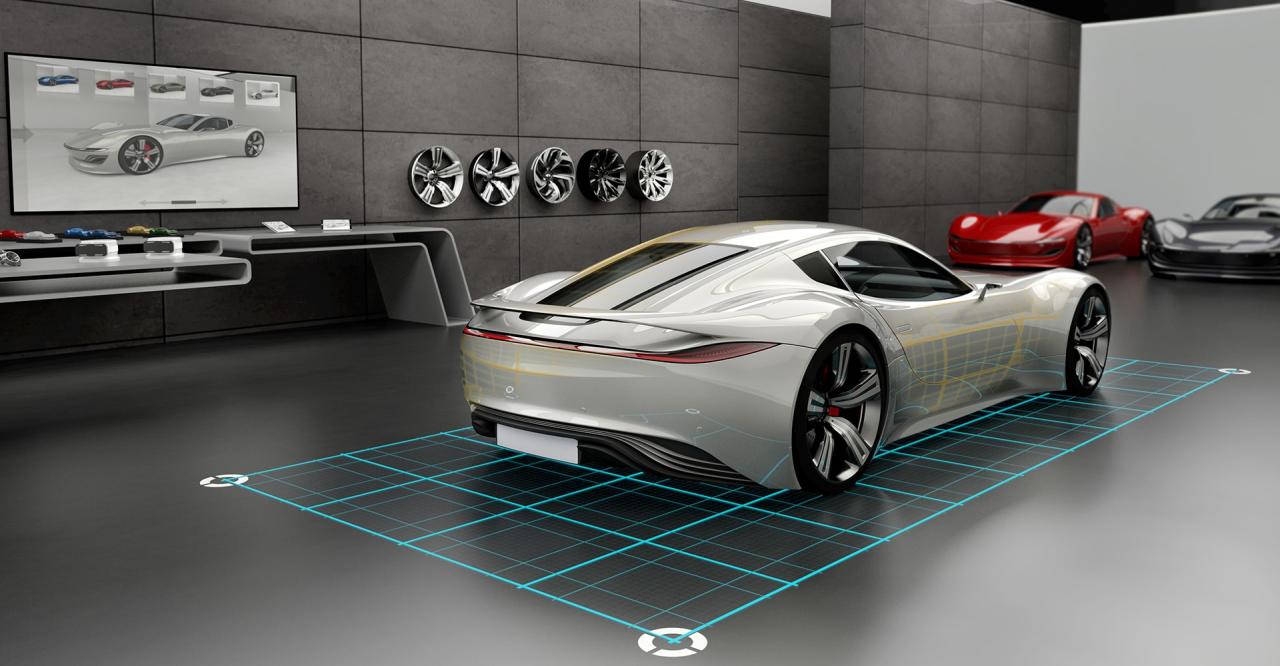
These driving forces are manifesting in several distinct and overlapping design trends evident in today’s and tomorrow’s vehicles.
A. Minimalist and Clean Aesthetics
A strong move towards simplicity, purity of form, and uncluttered surfaces.
- Reduced Clutter: Eliminating unnecessary lines, creases, and ornamentation for a smoother, more sophisticated appearance.
- Flush Surfaces: Door handles that retract flush with the body, integrated charging ports, and seamless transitions between panels.
- Concealed Sensors: Integrating sensors for ADAS and autonomous driving discreetly into the design, often behind translucent panels or within lighting elements.
- Simpler Grilles (or Absence of Them): Especially in EVs, the traditional grille is often replaced by a smooth, body-colored panel or a minimalist, illuminated interpretation of a grille.
- Clean Interior Layouts: Fewer physical buttons, with functions migrated to large touchscreens and voice control. Uncluttered dashboards and center consoles.
This trend emphasizes sophisticated simplicity and functional elegance.
B. Lighting as a Design Signature
Advanced LED and OLED technology has transformed vehicle lighting from a functional necessity into a powerful design element and communication tool.
- Distinctive Light Signatures: Unique LED daytime running lights (DRLs) that create an instantly recognizable “face” for a brand, both day and night.
- Full-Width Light Bars: Tail lights often span the entire width of the vehicle, creating a strong visual statement and enhancing perceived width.
- Animated Lighting: Dynamic turn signals, “welcome” and “farewell” light animations, and customizable ambient interior lighting.
- Projected Lighting: Headlights that can project warnings or symbols onto the road ahead.
- Grille Illumination: Electrified vehicles sometimes feature illuminated logos or grille elements to highlight their unique identity.
- Communication Lighting: Future designs will use external lighting to communicate vehicle status (e.g., autonomous mode engaged, pedestrian detected) to other road users.
Lighting is becoming a signature element, enhancing both aesthetics and functionality.
C. Focus on Interior Experience and “Digital Lounge”
The cabin is increasingly becoming a primary differentiator, especially with the rise of autonomous driving.
- Large, Integrated Screens: Seamless integration of multiple screens, often spanning the entire dashboard (e.g., Mercedes-Benz Hyperscreen) for immersive infotainment and digital cockpits.
- Sustainable and Luxurious Materials: Using high-quality, sustainably sourced materials (recycled plastics, vegan leather, responsibly harvested wood) to create a premium, yet eco-conscious, ambiance.
- Reconfigurable Seating: Modular seating arrangements that can adapt for different needs – facing each other for conversation, reclining for relaxation, or optimizing for cargo.
- Personalized Ambient Lighting: Customizable multi-color LED lighting that can adapt to mood, time of day, or drive mode.
- Wellness Features: Integrated air purification systems, fragrance diffusers, noise cancellation, and even biometric sensors to monitor occupant well-being.
- Intuitive Haptic Feedback and Voice Control: Reducing the need for visual distraction by incorporating haptic touch controls and advanced voice assistants.
- Hidden Storage and Clever Compartments: Maximizing functional storage space within a minimalist design.
The interior is evolving into a truly multi-functional and personalized living space on wheels.
D. Robust and Sculptural Forms
While minimalism is key, there’s also a trend towards muscular, sculptural forms that convey strength and capability.
- Defined Wheel Arches: Prominent, often squared-off wheel arches that emphasize the vehicle’s stance and off-road readiness (especially in SUVs and pickups).
- Muscular Fenders and Shoulders: Strong, sculpted lines over the wheels and along the body side that convey power and athleticism.
- Floating Roofs: Pillars that are blacked out or visually minimized to create the illusion of a roof floating above the body, adding a distinctive profile.
- Short Overhangs: In EVs, shorter front and rear overhangs emphasize the long wheelbase and maximize interior space, creating a confident stance.
- Aerodynamic Sculpting: Body panels are shaped not just for aesthetics but to efficiently channel airflow, often resulting in complex, beautiful curves and surfaces.
This trend combines a sense of ruggedness and capability with sophisticated, modern artistry.
Challenges and Opportunities for Designers
The future of automotive design is incredibly exciting but also presents significant complexities and opportunities for innovation.
A. Balancing Regulation with Creativity
Designers must navigate increasingly strict regulations while striving for innovation.
- Safety Standards: Adhering to evolving crash safety standards, which can dictate body structures, pillar thicknesses, and crumple zones.
- Pedestrian Safety: Designing front ends that are more forgiving to pedestrians in the event of a collision.
- Emissions and Efficiency: Designing for ultra-low drag coefficients to meet fuel economy and EV range targets.
- Autonomous Vehicle Regulations: Future regulations regarding external communication for AVs will directly influence lighting design and display elements.
- Standardization vs. Differentiation: Finding unique design solutions within regulatory frameworks that often promote standardization.
The challenge is to be innovative within a tightly regulated environment.
B. Integrating Technology Seamlessly
The sheer volume of new technology must be integrated aesthetically and functionally.
- Sensor Integration: Making radar, lidar, and camera arrays invisible or harmonious design elements without obstructing their function.
- Cable Management: Managing the complex wiring harnesses of connected and electric vehicles without compromising interior space or aesthetics.
- Heat Dissipation: Designing efficient cooling systems for batteries and high-performance electronics while maintaining aerodynamic purity.
- User Interface (UI) and User Experience (UX) Harmony: Ensuring that the digital interfaces are as thoughtfully designed and intuitive as the physical elements of the car.
- Software-Defined Design: Designers need to understand and collaborate closely with software engineers to create a cohesive digital and physical experience.
Seamless integration is key to avoiding a “tech-cluttered” look.
C. The Evolution of the “Driver” Role
As autonomy increases, designers must adapt to a potentially less active human occupant.
- Fluid Interiors: Creating interiors that can easily transform between driving-focused and lounge-like configurations.
- HMI Evolution: Redesigning human-machine interfaces to be intuitive for both active driving and passive ride experiences, perhaps with voice, gesture, or even eye-tracking becoming primary inputs.
- Multi-Purpose Displays: Screens that can serve as entertainment systems, information displays, or communication hubs depending on the level of autonomy and occupant activity.
- Comfort and Well-being: Greater emphasis on ergonomic seating, personalized climate zones, and sensory experiences (lighting, sound, fragrance) to enhance passenger comfort during autonomous rides.
Design will increasingly cater to the “passenger” experience.
D. Sustainability Beyond Powertrains
Designers are challenged to make the entire lifecycle of a vehicle more sustainable.
- New Material Exploration: Continuously researching and implementing innovative, low-impact, and recyclable materials.
- Design for Repairability: Creating vehicles that are easier and more cost-effective to repair, extending their lifespan and reducing waste.
- Modular Design: Designing components that can be easily replaced or upgraded, allowing for longer product lifecycles.
- Circular Material Flows: Collaborating with material suppliers and recyclers to create closed-loop systems for automotive materials.
- Transparent Sourcing: Ensuring that all materials are sourced ethically and sustainably, and communicating this to consumers.
Sustainability must become an integrated part of the design philosophy, not just a marketing add-on.
E. Differentiating in a Homogenizing Market
With increasing regulations and common platforms, designers face the challenge of creating truly distinctive vehicles.
- Brand Identity Evolution: Evolving brand design languages to remain fresh and relevant while retaining recognizable core elements.
- Unique Lighting Signatures: Utilizing advanced lighting technology to create highly distinctive and communicative “faces” and “tails” for vehicles.
- Interior Experience as a Differentiator: With similar performance metrics in EVs, the interior comfort, technology, and overall ambiance become key differentiators.
- Personalization Options: Offering extensive customization programs to allow buyers to create unique vehicles.
- Digital Design Language: Developing unique UI/UX designs that reflect the brand’s aesthetic and values in the digital space.
Designers must strive for true innovation and character in a landscape that risks becoming homogenous.
Conclusion
The dynamic interplay of automotive design trends is charting a fascinating course for the future of mobility. Far from being a superficial exercise in aesthetics, design has become a pivotal force, blending artistry with cutting-edge engineering to address the grand challenges of electrification, autonomy, digitalization, and sustainability. Vehicles are transforming into intelligent, personalized, and environmentally conscious extensions of our lives, with designers meticulously crafting every curve, pixel, and material choice. While the journey ahead is complex, demanding innovative solutions to integrate technology seamlessly and balance regulation with creativity, the passion for creating beautiful, functional, and meaningful objects remains at the core. The automotive designers of today are not just sketching cars; they are envisioning and shaping the very experience of travel for generations to come, ensuring that the vehicles of tomorrow are as captivating as they are responsible.

